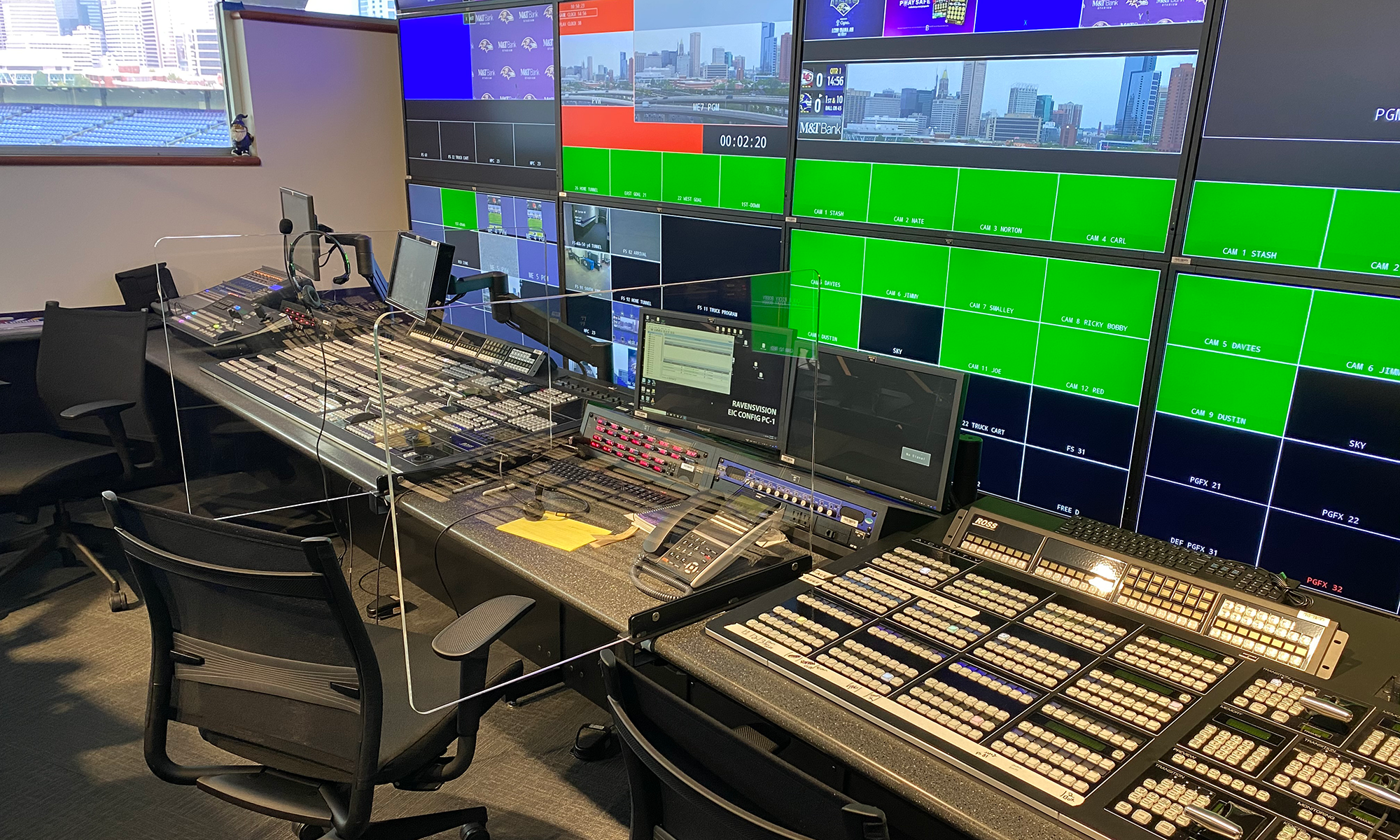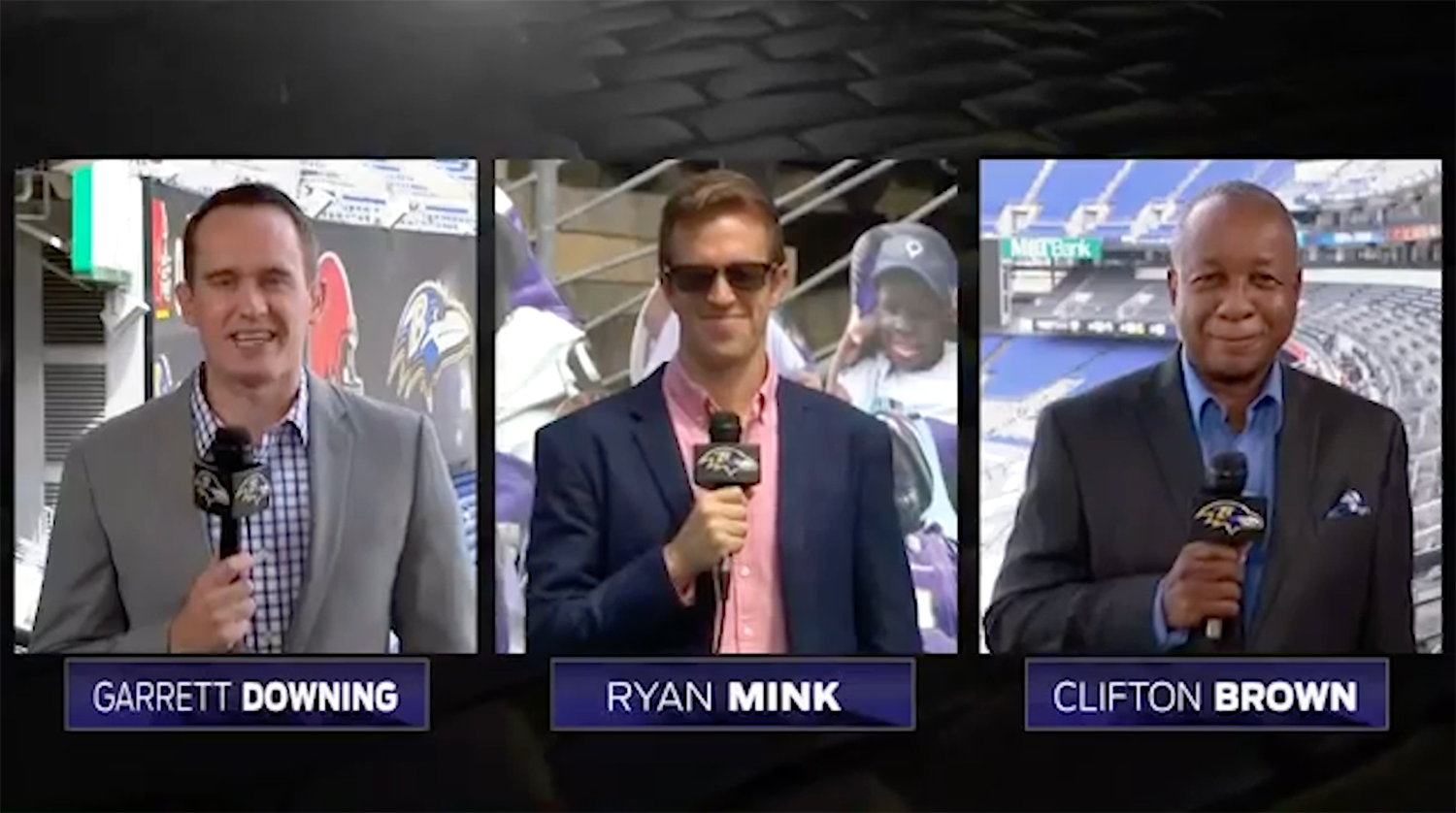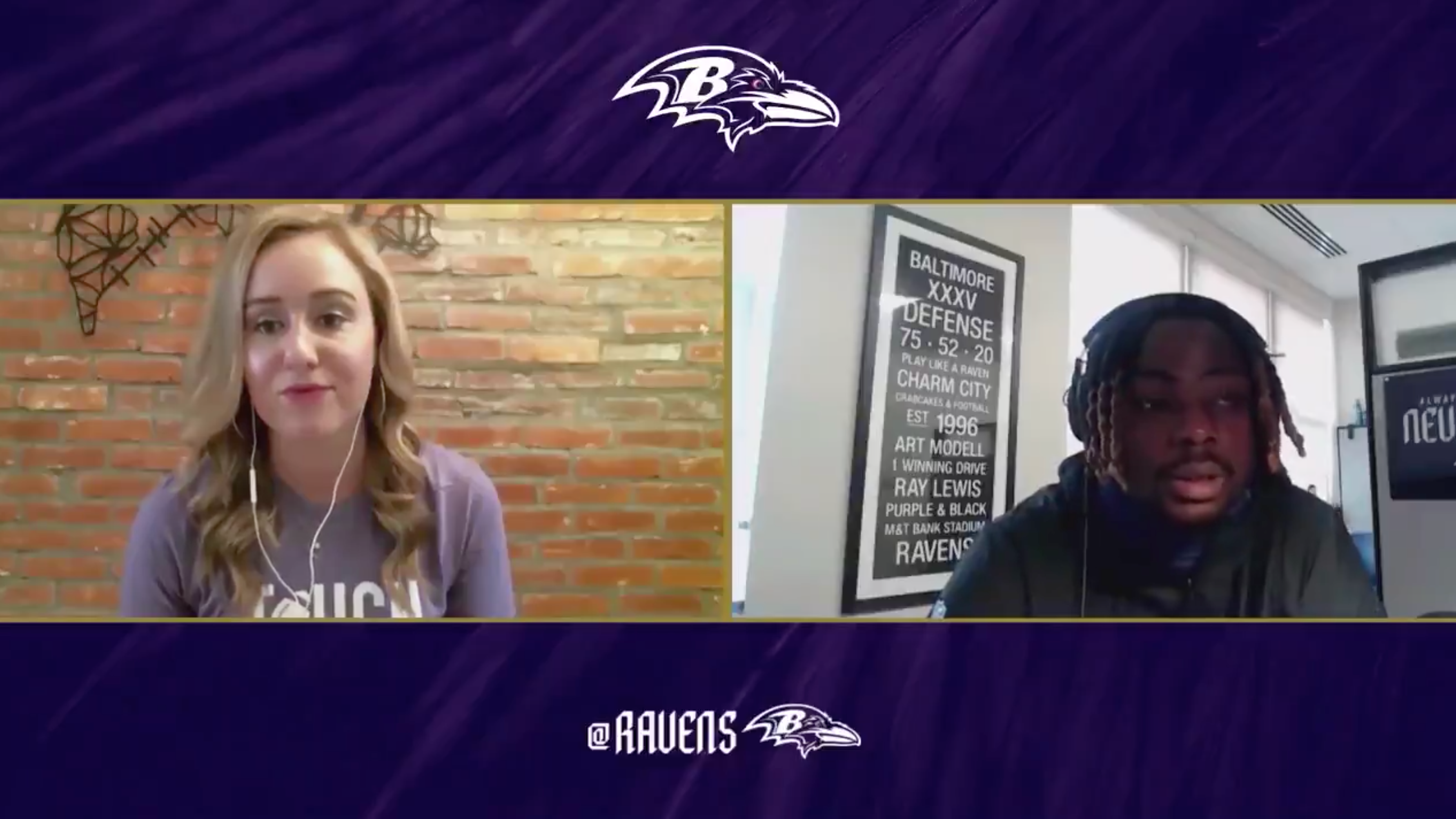On the Gridiron: Baltimore Ravens Adjust In-Stadium Operations To Feed More Content to Digital, Social Platforms
COVID protocols have team getting comfortable with workflows it likely would not have used before
Story Highlights
Many professional sports have opted for a return to play inside a sanitized bubble. Not the NFL. Without skipping a beat, the league is soldiering on with regular-season games in all 30 stadiums across the country. Similar to our At the Ballpark series, On the Gridiron examines the new routines, habits, and production philosophies of in-venue personnel on any given Thursday, Sunday, or Monday.
Monday night’s mouth-watering Week 3 matchup between the defending champion Kansas City Chiefs and the unbeaten Baltimore Ravens was the date that everyone circled on the calendar when the NFL announced its 2020 schedule in May.
Although the play on the field promises to be spectacular, there’s no sugar-coating it: the atmosphere in M&T Bank Stadium tonight should be electric. It should be a playoff atmosphere in September on primetime national television. Instead, with no fans in the stands due to COVID-19 protocols, the media group within the Baltimore Ravens will be working in overdrive to deliver an in-stadium experience that brings an energy to the field on this huge night.
“It’s weird when you’re used to producing for 70,000 fans and you’re used to feeding off that energy and doing different things in our broadcast to enhance that energy,” Jay O’Brien, VP, broadcasting and game day production, Baltimore Ravens, said to SVG following the team’s Week 1 home victory over the Cleveland Browns. “Getting into a game day and not being able to feel the crowd and make decisions of our broadcast based on the crowd was a bit odd.”
MORE ON THE GRIDIRON INTERVIEWS
- In Between Games, JungleVision Productions Sets the Table With Bengals Weekly
- Chicago Bears Fuel Content Train With Remote Workflows, Safe Crewing at Soldier Field
- Tennessee Titans’ Behind-the-Scenes Video Efforts Embodied by ‘Tennessee Tough’ Campaign
- Seattle Seahawks Production, Ops Teams Keep Fans at the Heart of Game Day at CenturyLink Field
- Silver and Black Productions, Las Vegas Raiders Build New Roots During Allegiant Stadium’s Inaugural Season
- Philadelphia Eagles Embrace Virtual Workflows for Efficient Regular-Season Strategy
- New York Giants Entertain At-Home Fans With Daily Digital, Linear Programming
- While SoFi Stadium Remains Empty, Los Angeles Chargers Refine Production Workflows
- Atlanta Falcons Adjust To Evolving COVID-19 Policies at Mercedes-Benz Stadium
- Minnesota Vikings Adjust Content Approach at High-Tech U.S. Bank Stadium
- How the Kansas City Chiefs Celebrated Super Bowl LIV, Displayed Moment of Unity Before Season Opener
- Carolina Panthers’ Mike Bonner Settles Into New Role Amid Interesting Circumstances
- Indianapolis Colts Handle Remote Radio Broadcasts of Away Games From Lucas Oil Stadium
- After Busy Offseason, Denver Broncos Welcome Limited Fans Back to Empower Field at Mile High in Week 3
- San Francisco 49ers Production Team Shifts Gears To Engage the Players
- Jacksonville Jaguars Reflect on In-Stadium Fans During Week 1, Connecting With ‘Duval’ Community
- Without Raucous Crowds, New Orleans Saints Adapt to a Quiet Mercedes-Benz Superdome
A Game Day Unlike Any Other
The Ravens had to hit the ground running in that Week 1 home date against Cleveland, and it put O’Brien and his team in a position to create a completely different videoboard show for a stadium restricted from hosting fans.
Despite the wildly unique atmosphere, O’Brien says, he tried his hardest to keep the energy up with his team and maintain a sense of normalcy.

The Baltimore Ravens have redesigned the control room at M&T Bank Stadium to meet social-distancing guidelines. That includes installing plexiglass barriers between operator work spaces.
“We tried to keep our show for pre-game and in-game as close to normal as possible,” he explains. “We want to be ready if and when fans return to the stadium. We didn’t want to lose the energy either: the excitement in the control room and the momentum that usually build as a season goes on.”
To that end, the Ravens have kept its pregame hype at a fever pitch, maintaining player intros and dramatic countdown-to-kickoff music and video content. That includes plenty of highlight-reel edits and team prompts to fill the bowl with some desperately needed fire.
The crew was able to deploy additional robotics in key positions, such as the player entrance tunnel, and to find ways to acquire compelling content even at a time when positions for crewed cameras are limited.
In the control room, the entire staff wore masks, and each of the positions was redesigned to include plexiglass barriers to separate crew members.
In addition, the control room was repurposed in portions to produce a live, 45-minute pregame show from inside the stadium for consumption on the club’s various digital and social platforms. That was something the team had never done from the stadium, challenging the crew to produce, essentially, a side-by-side show in pregame for the in-stadium videoboards and digital.
During the game, content was largely focused on replays after every snap and providing multiple angles for every play. O’Brien acknowledges that the biggest changes in content came during commercial breaks, where, traditionally , the content is fan-focused in the form of direct messaging to various elements of the “Fan Cam.”
The lack of a need to create some of that fan-centric content has led to a slight trimming of the control-room staff. Such positions as an editor for an around-the-league highlight package, selected stats producers, replay operators, and video shaders have been lost for the time being. In addition, the in-venue video team no longer has the four handheld-camera operators typically deployed on the field in a normal season.
On the positive side, O’Brien’s group does have a number of staffers in Tier 2 of the league’s protocol, granting them socially distant access to the team to capture content. Senior Videographer Eddie Coughlan and Cinematographer Nick Modisett are among the exclusive few and have been logging countless hours pulling in content for the media group to share with fans.
Stadium Practices Offer Huge Rehearsal Opportunity
According to O’Brien, a huge factor in the Ravens media team’s Week 1 success was a series of stadium practices that allowed the crew to get familiar for their “new normal” surroundings.

Prior to the start of the team’s Week 1 home matchup with the Cleveland Browns, the Ravens produced a 45-minute pregame show that streaming to the club’s various digital and social platforms.
Not only did it allow them to get their reps in and rehearse with new video elements on the boards, it gave the staff the valuable opportunity to get comfortable with the league-mandated protocols, determine where everyone could (and couldn’t) go on game day, and experiment with camera positions.
To get familiar with the need to produce the digital pregame show from the in-venue control room, the Ravens also produced editions of its Training Camp Live show from those practices at M&T Bank Stadium.
“I think the practices really helped us get into a rhythm,” says O’Brien, “and to ensure that the right content was going to the right place and that it all looked great and sounded great.”
The Training Camp Live shows were also immensely valuable content opportunities with the team unable to host fans at Training Camp or at any preseason games. For a team loaded with talent, the Ravens come in with significant hype, and the media group still needed to deliver a thrilling experience for a fired-up fan base.
“It was a real challenge to get that show set up and to be able to produce that type of show from our practice facility,” says O’Brien. “We hadn’t done it before and needed to do it safely. How can we get robotic cameras on our talent and still have them lit well while they are on the field? How can we provide content that fans would want to engage with but wouldn’t give away too much for competitive seasons?”
An Offseason of Trying New Things
The Training Camp Live series was just one project in an offseason loaded with new challenges. With all NFL teams unable to work from their practice facilities for much of the offseason, the Ravens, like many media teams around the league, got used to working remotely and thrived in the opportunity to execute new ways to deliver content that fans would want to consume.
Inside the Ravens’ Under Armour Performance Center in Owings Mills, MD, the Ravens media team has a studio and video-production facilities that it is now, even with the season under way, very restricted in using. The team is not permitted to conduct interviews with players and/or coaches in that studio, so they constructed a smaller studio in an area where players and coaches are permitted. Meanwhile, on-air talent continues to work from the original studio. It’s not an ideal setup, says O’Brien, but it’s a solution that allows them to use the cameras and the lighting they prefer to deliver more high-quality content despite distancing protocols.

The Ravens media group has needed to get creative with the production of its interviews with players and coaches. Here Social Media Coordinator Cassie Calvert interviews running back Gus Edwards over Zoom.
Like many, the Ravens have also gotten plenty of reps shooting and producing interviews with video-chat platforms like Zoom.
“All of us in the industry (at least maybe we are) are a bit snobbish in terms of wanting to shoot everything with our best cameras and have it lit very well,” says O’Brien. “I think this offseason has definitely pushed us to work with more virtual interviews and cellphone content shot by a family member. We can still deliver great content for our fans.”
One example of the silver lining of these workflows is a content series that the Ravens produce with their Super Bowl-winning former head coach Brian Billick. Despite not living in Maryland, he is able to continue contributing segments for the team’s digital and social platforms that breaks down plays from the previous week’s — or previous season’s — games.
“In past years, I’m not sure we would have been cool with that,” admits O’Brien. “We’ve evolved in that way, and that’s exciting because it has opened us up to new opportunities.”
Technologically, the Ravens has benefited from leadership that has helped the team not only keep the media-production ship afloat but keep it doing spectacular things. The Ravens media group is led by SVP, Digital Media and Broadcasting, Michelle Andres and has seen stand-out behind-the-scenes efforts by Director, Broadcast Technical Operations, Steve Groff; Director, Production, Matt Brevet; Senior Producer/Editor Phil Cunningham, and many, many more.
“When some folks are at home and some folks are at the facility, everything is just going to take longer,” O’Brien notes. “It’s not as simple as running out during a game to who is shooting camera and grabbing a card. There’s none of that. It’s taking longer hours, but everybody is on board. We all have the same goal. We push each other, and they push me. I’m so impressed with all of them.”
